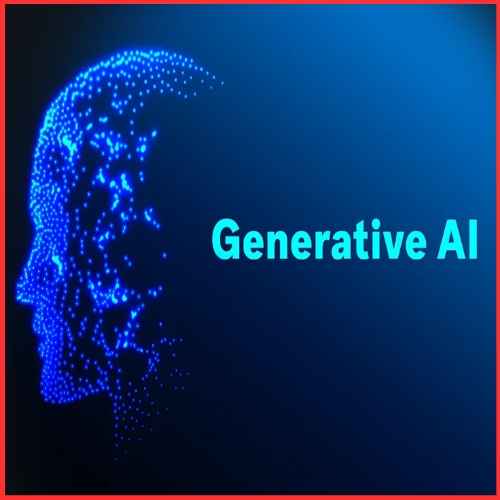It’s crucial to first understand what artificial intelligence (AI) is and isn’t in order to comprehend how it will affect market research. The intelligence exhibited by robots is known as artificial intelligence, and it is frequently characterized by learning and adaptability. It differs from automation in some ways.
Numerous operations in the insights sector are already greatly accelerated by automation. Automation is essentially a set of guidelines that a computer follows to carry out a task without human intervention, from hiring to data gathering and analysis. It can be challenging to discern from AI when branching paths and complicated reasoning are applied. However, there is a significant distinction. When a task is automated, software always complies with the instructions supplied to it, even in its most sophisticated forms. Each time the process is executed, the software (or machine) does not make any decisions or pick up any new information. Artificial intelligence is distinguished from automation by learning. And it is this that presents those who embrace it with the most opportunity.
Examples of AI currently in use

Artificial intelligence can already provide insights and analyses to academics that weren’t previously possible in a number of different ways. The capability to process huge, unstructured datasets stands out the most. Processing Open-Ended Data Known as Big Qual, the procedure involves applying statistical analytic methods to enormous amounts of written data with the goal of elucidating quantitative conclusions.
An example of this in use is provided by the Google Cloud Natural Language API. The software identifies “AI” as the most important entity in the opening paragraph of this article as an example (i.e. the most central to the text). Additionally, it has the ability to identify the text’s categorization, grammatical structure, and sentiment. In this instance, the second sentence was generally more optimistic whereas the first and third sentences had a negative tone. In the case of open-ended data, this can, when used on a wide scale, cut the time it takes to analyze qualitative replies from days to seconds.
Community Management that is Proactive

Community management is a second area where artificial intelligence is now being employed. Member disengagement is one of the biggest challenges to a long-lasting community, as any community manager will attest. This may lead to a high rate of turnover, more managerial work, and lower-than-expected outcomes.
Fortunately, AI-driven behavioral predictions lower the danger of disengagement. To create individualized engagement profiles for community members, behavioral predictions entail assessing a wide range of data about them, including the frequency of logins, the sites visited, the interval between logins, etc.
In the case of open-ended data, this can, when used on a wide scale, cut the time it takes to analyze qualitative replies from days to seconds.
AI’s Role in Market Research in the Future

Of course, progress is constantly being made. Artificial intelligence is a technology that will have a far greater impact on market research in the years to come, even if we are still very much in our infancy. Although it is difficult to estimate with precision what this impact will be, the concepts mentioned below are already in development and might become reality sooner than we anticipate.
Market forecasting and research conducted online

It costs money to hire people. In reality, it can swiftly deplete a study budget, depending on the sample size and the length of the work. One proposed idea to reduce this cost and stretch insights budgets further is to build a virtual panel of respondents based on a much smaller sample.
According to the theory, sample sizes inherently limit a brand’s ability to comprehend every current and potential customer’s behavior. In order to create a bigger, more representative pool of virtual responders, it is necessary to take this sample, represent it as clusters of behavioral features, and build it. This approach has many drawbacks, including the potential that virtual respondents may initially only be able to provide binary responses. This still has usefulness, though, especially when coupled with the capacity to simultaneously execute a sizable number of virtual experiments. This could be used to determine the best price point for a product or to gauge the potential effects of changing a product attribute on sales.
Virtual moderators and chatbots

It is currently unclear whether artificial intelligence could be utilized to collect conversational qualitative research at scale, as FlexMR CEO Paul Hudson noted in a study presented at Qual360 North America. Today’s research chatbots can only ask pre-programmed queries and display them in a user interface similar to online chat software. These online question delivery platforms, however, may evolve as AI technology does. The ultimate test will be if such a tool could analyze responses from respondents in a way that allowed for the customization of subsequent questions and the exploration of intriguing points. This will mark the transition to a virtual moderator from the question delivery format. Finding secondary sources
Research is not always primary research. In reality, secondary or desk research is the most economical choice for many smaller organizations. However, it can also be a useful tool for larger insight teams looking to penetrate new markets, develop new products, evaluate supply chains, or analyze rival performance.
Tweet sent by FlexMR

Tweet Although essential, this desk research is limited by the resources available. AI has the power to alter this. Resource availability is a natural constraint on desk research. Desk research, while essential, can take a lot of time, thus decision-makers may not always receive information before making a choice. This is a potential use for artificial intelligence because it can read, pick up themes, and spot trends much more quickly than a person. Finding content for the AI to process is now a hurdle to adoption. This barrier is, however, gradually disappearing as more and more content is archived on both public and private networks.
Unfortunately, despite the vast application of AI, it appears that much of the discussion in market research today is focused on coding and how the technology could expedite the analysis of qualitative data. Although this is a significant topic, there are plenty more potential uses for AI in the insights sector. It’s crucial that this wider range of applications be thoroughly investigated if insight professionals are to properly capitalize on this potent technology, which is still in its infancy.














